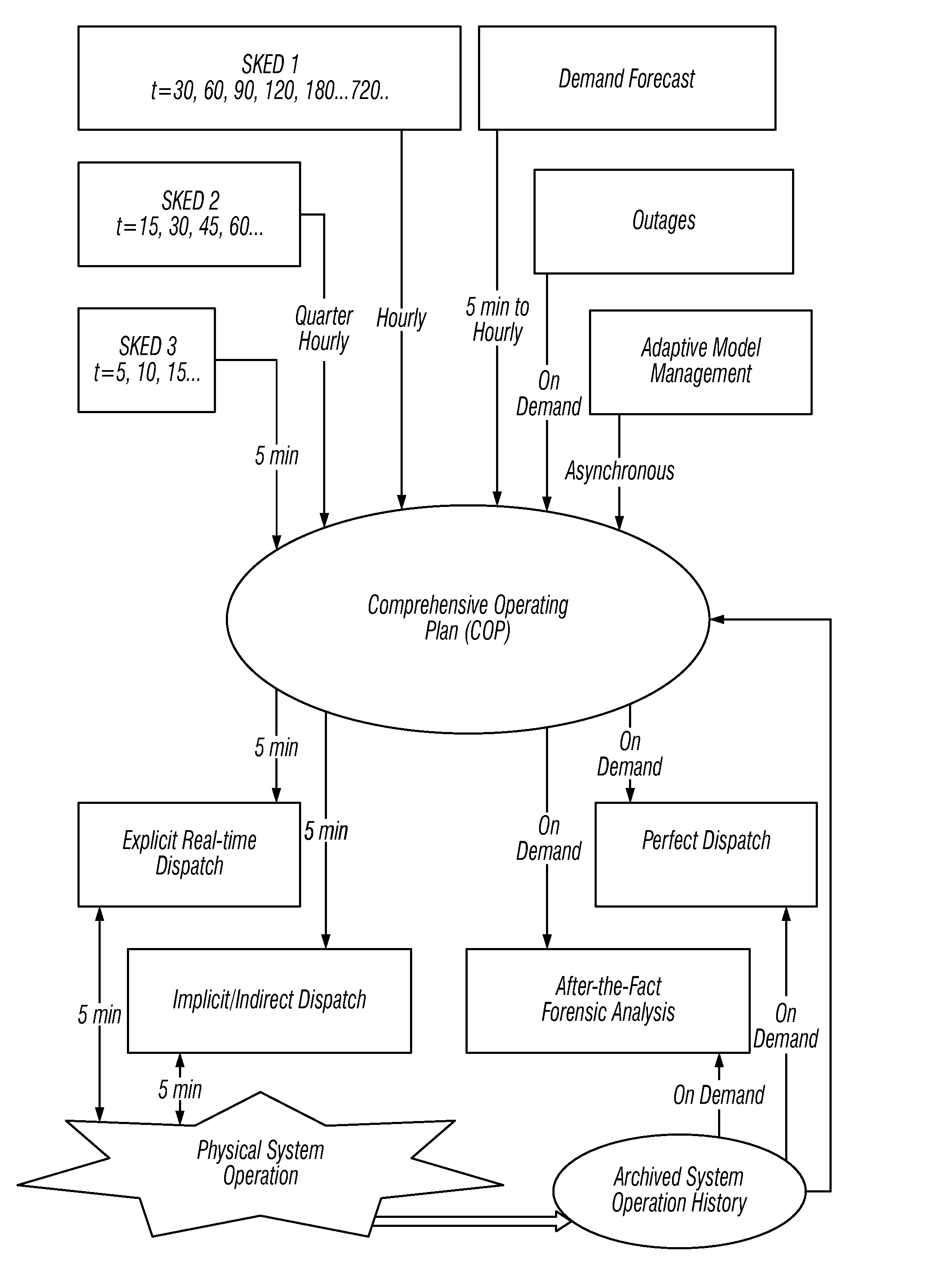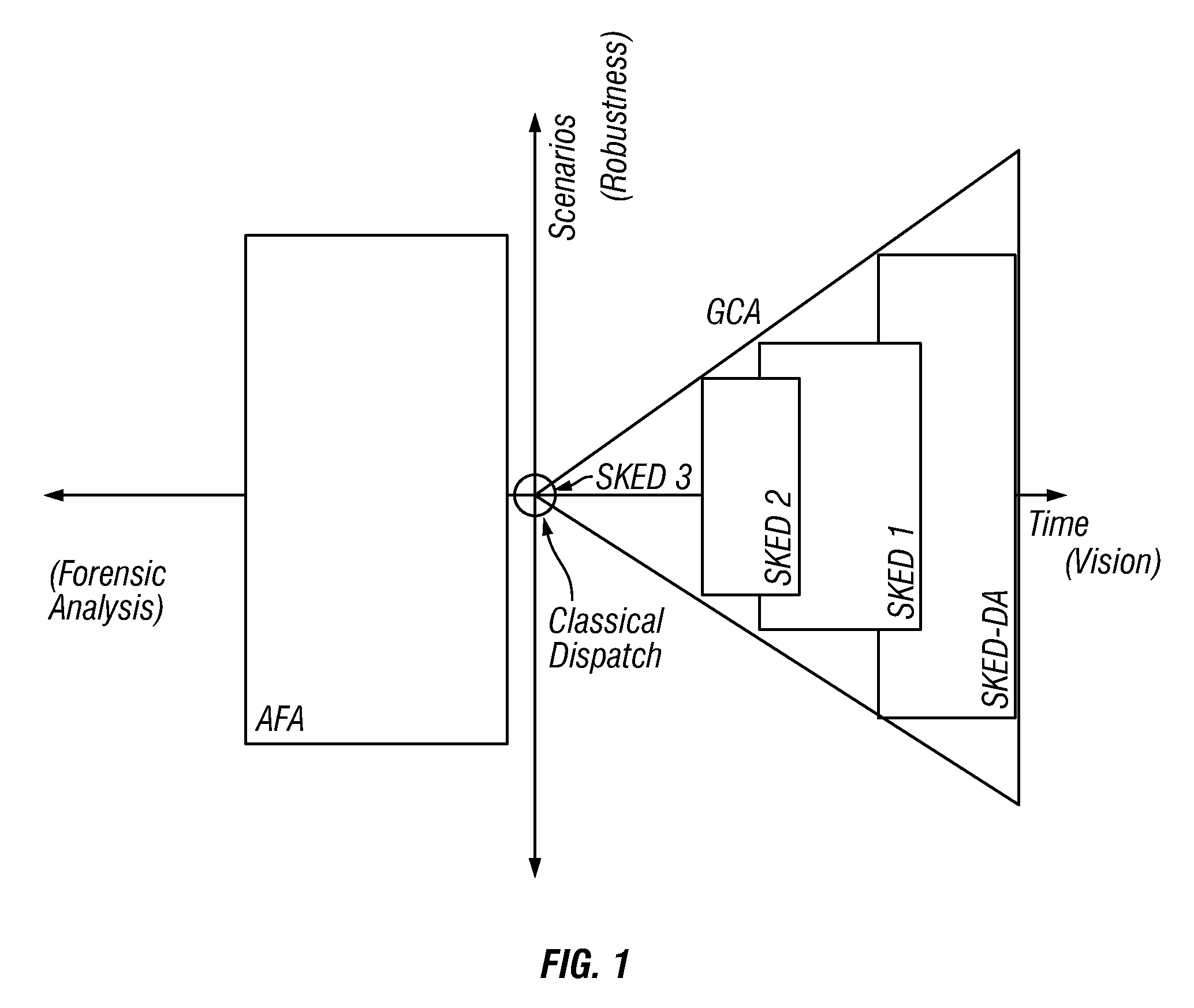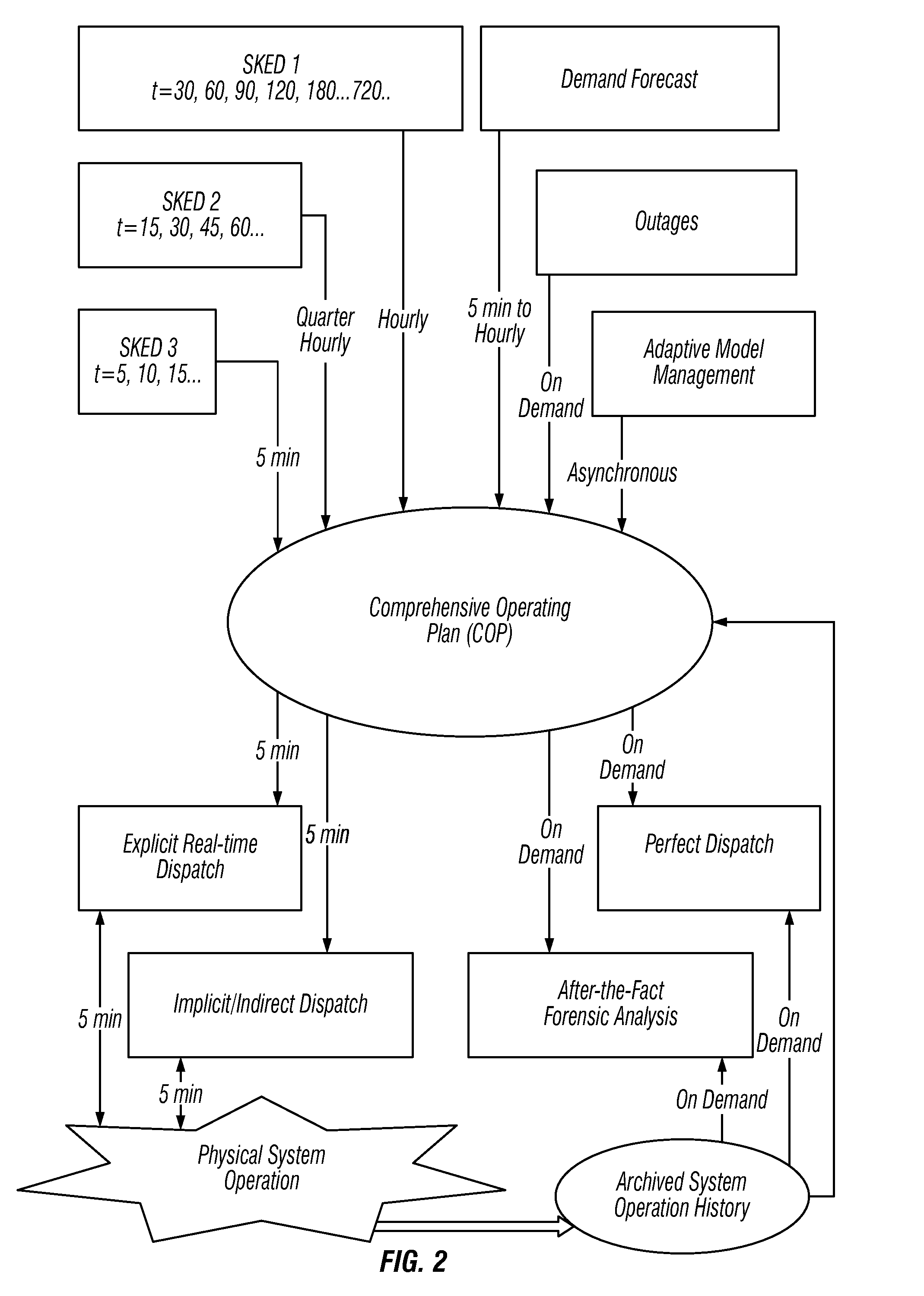System tools for evaluating operational and financial performance from dispatchers using after the fact analysis
a dispatcher and after-the-fact analysis technology, applied in the field of system tools, can solve the problems of increasing energy consumption, increasing the cost of electric power delivered during periods of peak demand, and increasing the unreliable and antiquated electric power grid itself, so as to and evaluate operational and financial performance.
- Summary
- Abstract
- Description
- Claims
- Application Information
AI Technical Summary
Benefits of technology
Problems solved by technology
Method used
Image
Examples
example 1
Use Case No 1
Submitting Load Forecast
[0171]This example illustrates adding new load forecast to one or more load forecast areas for the respective load forecast source. The trigger is load forecast engine 1 which submits a new load forecast. The demand forecast integrator validates the submitted information: valid load forecast source, valid leaf-level load forecast area, properly formed load forecast data points. demand forecast integrator overlays new load forecast on top of existing load forecast for load forecast engine 1. Assuming that the submitted load forecast's minimum and maximum time are Tmin and Tmax, all previous input from load forecast engine 1 within Tmin and Tmax inclusively can be deleted. Demand forecast integrator responds with a success message. As a post condition, load forecast from load forecast engine 1 is updated in demand forecast integrator. This example illustrates how new submittals contain better load forecast than the previous ones.
example 2
Use Case No 2
Submitting Load Forecast Overrides
[0172]This example illustrates adding load forecast override for one or more load forecast areas. In this example, the trigger occurs when an operator entered and saved load forecast override for a load forecast A. The market operator interface submits the overrides to the demand forecast integrator. demand forecast integrator validates the submitted information: valid load forecast source, valid leaf-level load forecast area, properly formed load forecast override data and the like. The demand forecast integrator adds the override values for the load forecast A. Assuming that the submitted override runs from T1 to T2, all previous override within T1 and T2 is removed. The submittal may include multiple set of overrides with non-adjacent time periods for the same load forecast A. Demand forecast integrator responds with a success message. The result is that demand forecast integrator contains additional overrides for the load forecast A...
example 3
Use Case No 3
Requesting Composite Load Forecast for the Market Operator Interface
[0173]This example illustrates obtaining a composite load forecast for the market operator interface. The trigger event is when the operator displays the composite load forecast for a specified time range. The market operator interface submits a request for the composite load forecast for the requested time range and load forecast A. The demand forecast integrator validates the submitted information which includes validating: (i) the load forecast source; (ii) the leaf-level load forecast area; (iv) from and to times; (v) time step, and the like. The demand forecast integrator constructs the composite load forecast or the demand forecast integrator retrieves the composite load forecast depending on the implementation. The demand forecast integrator responds with the composite load forecast, including overrides. The market operator interface displays the composite load forecast and overrides in a graphic...
PUM
 Login to View More
Login to View More Abstract
Description
Claims
Application Information
 Login to View More
Login to View More - R&D
- Intellectual Property
- Life Sciences
- Materials
- Tech Scout
- Unparalleled Data Quality
- Higher Quality Content
- 60% Fewer Hallucinations
Browse by: Latest US Patents, China's latest patents, Technical Efficacy Thesaurus, Application Domain, Technology Topic, Popular Technical Reports.
© 2025 PatSnap. All rights reserved.Legal|Privacy policy|Modern Slavery Act Transparency Statement|Sitemap|About US| Contact US: help@patsnap.com



